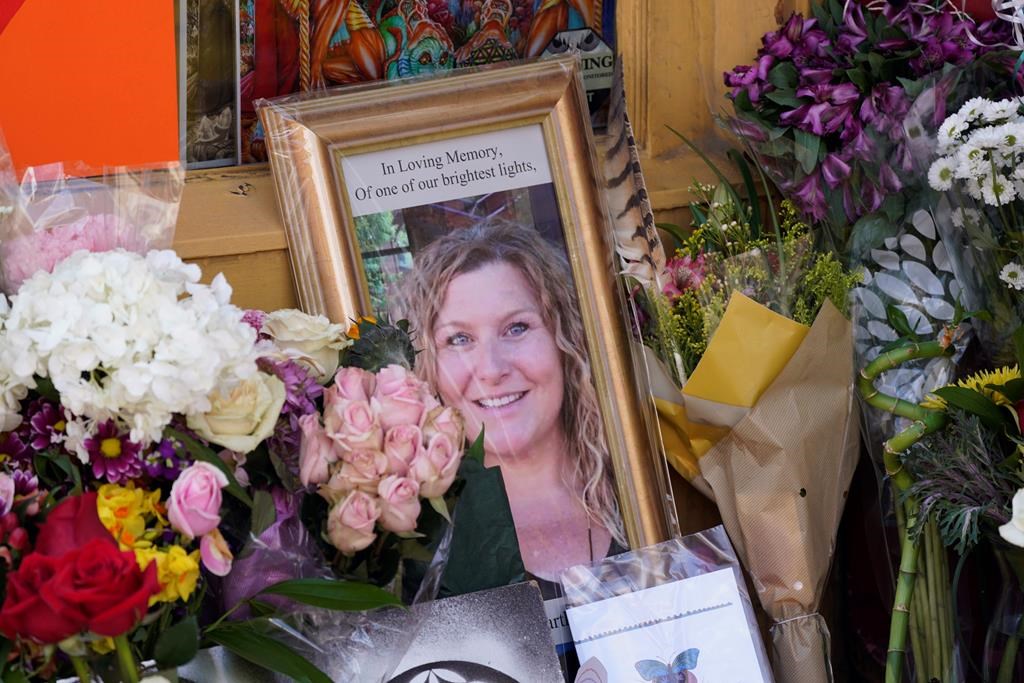EXPLAINER: Questions remain after supermarket mass shooting

As the U.S. reels from its second mass shooting in less than a week, authorities are working to piece together what led up to the rampage that killed 10 people at a Colorado supermarket on a weekday afternoon.
Portraits are beginning to emerge of the victims, including the owner of a local clothing shop, a man about to become a grandfather, a photographer and a Medicare agent who was also an actress.
The suspect in the shooting is in jail, but many questions about what caused the shooting remain unanswered. Here’s a look at what is known and what isn’t:
Advertisement
LIVES LOST
Some victims were gunned down while picking up groceries; others were putting in a day’s work. One, Eric Talley, was a police officer who raced to the store that day to rescue people from the deadly attack.
The victims have been identified as Denny Stong, 20; Neven Stanisic, 23; Rikki Olds, 25; Tralona Bartkowiak, 49; Teri Leiker, 51; Suzanne Fountain, 59; Kevin Mahoney, 61; Lynn Murray, 62; and Jodi Waters, 65.
The attack was the seventh mass shooting this year and the nation’s deadliest since a 2019 assault on a Walmart in El Paso, Texas, killed nearly two dozen people.
SHOOTER’S MOTIVE
Advertisement
The King Soopers grocery store was considered a community hub by many in the south part of Boulder, a liberal city of about 100,000 people that’s home to the University of Colorado.
But the suspect in the shooting, 21-year-old Ahmad Al Aliwi Alissa, was from the Denver suburb of Arvada, about 20 miles (32 kilometres) away. The two-story house believed to be owned by his father is in a relatively new, middle- to upper-class neighbourhood.
His family told investigators they believed Alissa was suffering some type of mental illness, including delusions, according to a law enforcement official who spoke to the AP on the condition of anonymity. Alissa seemed at times to think people were following or chasing him, a possible factor in the violence, according to what relatives told the official, who was briefed on the shooting but not authorized to speak publicly.
THE WEAPON
The suspect bought the weapon believed to have been used in the shooting six days before the slayings. Authorities haven’t said where or how he purchased it. The AR-15-style gun recovered at the scene, a Ruger-AR-556, is technically a pistol but strongly resembles a rifle with a slightly shorter stock. Another handgun was recovered inside the store as well as a green tactical vest Alissa removed along with most of his clothing before his arrest.
Advertisement
He had been playing around with a weapon that looked like a “machine-gun” about two days earlier, his sister-in-law later told police.
PAST ASSAULT
When he was a high school senior in Arvada 2018, Alissa was convicted of knocking a fellow student to the floor, then climbing on top of him and punching him in the head several times, according to police documents.
Alissa complained that the student had made fun of him and called him “racial names” weeks earlier, according to the affidavit. Alissa was born in Syria, emigrated to the U.S. as a child and is now a U.S. citizen, according to two law enforcement officials who spoke to the AP on the condition of anonymity because they are not authorized to speak publicly. He was sentenced to probation and community service.
A former wrestling teammate told The Associated Press he had a “short fuse,” and got kicked off the team after losing a match and getting so angry he let loose a string of invectives and yelled he would kill everyone.
Advertisement
GUN LAWS
A judge struck down a Boulder city ban on possessing assault weapons 10 days before the slayings. It’s likely impossible to know if it could have stopped him, but the timing was tragic for city leaders who had hoped to prevent a mass shooting of the kind that has gripped Colorado several times over the past two decades.
The state does have a law allowing firearms to be taken from people who pose a danger. Family, household members or law enforcement can petition a judge under the measure known as an extreme risk protection order or “red flag law.”
It’s unclear whether anyone close to Alissa was concerned enough about his behaviour to begin the court process over the past week. Still, convincing a judge that weapons need to be seized or surrendered typically requires evidence of an imminent threat, said Jacob Charles, executive director at the Duke Center for Firearms Law. Considering the importance of Second Amendment rights, general concerns about someone acting odd and having a weapon is typically not enough, he said.
__
Advertisement
Associated Press writer Colleen Long in Washington, D.C. contributed to this report.
Lindsay Whitehurst, The Associated Press